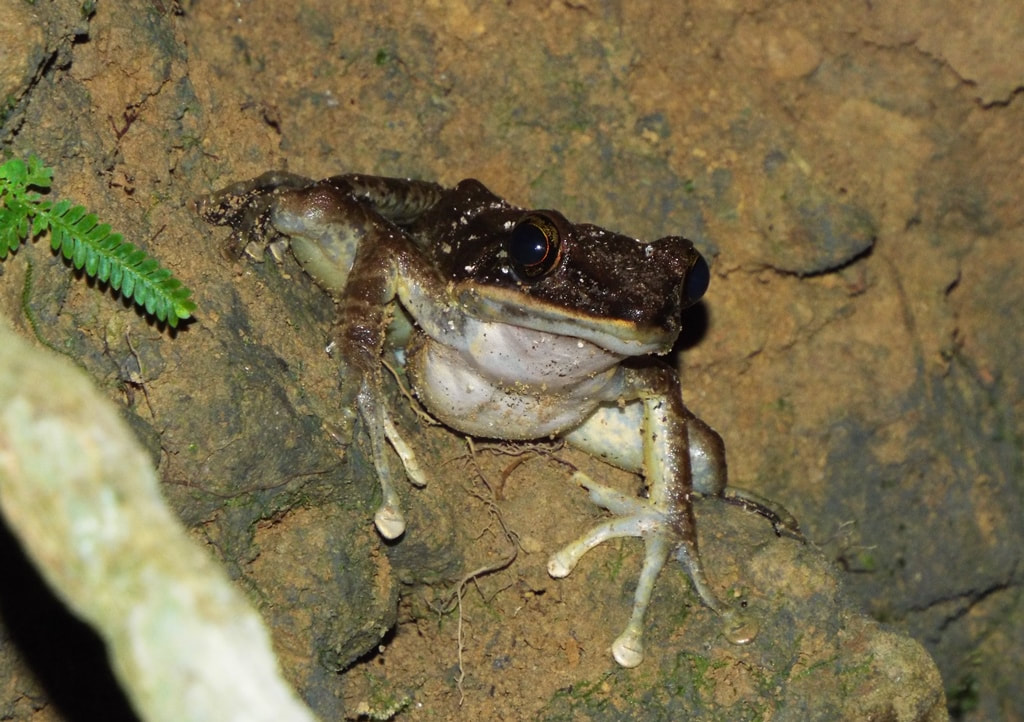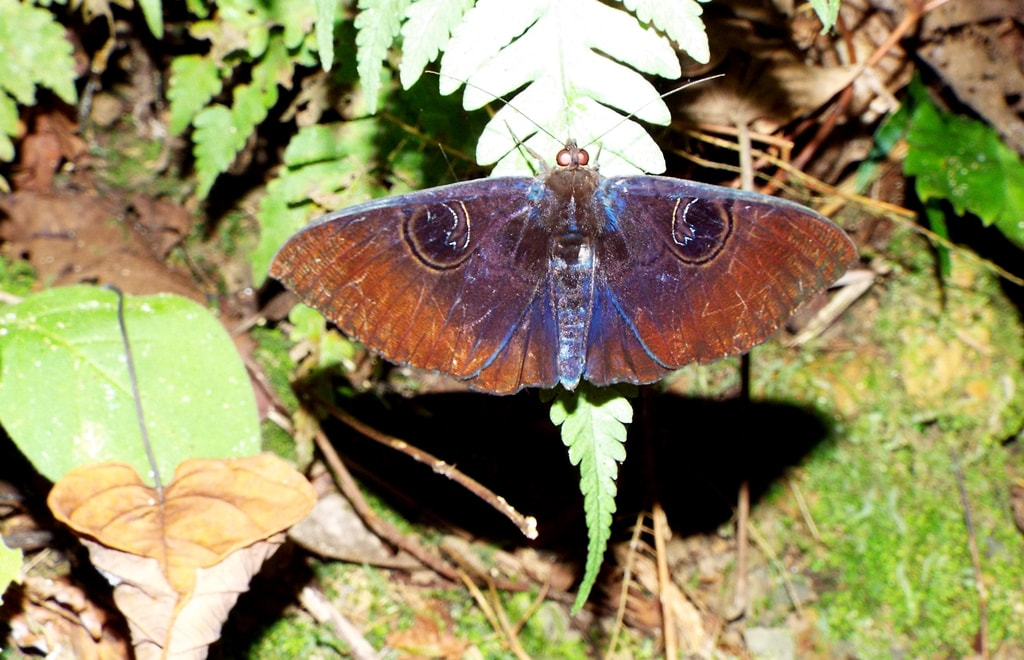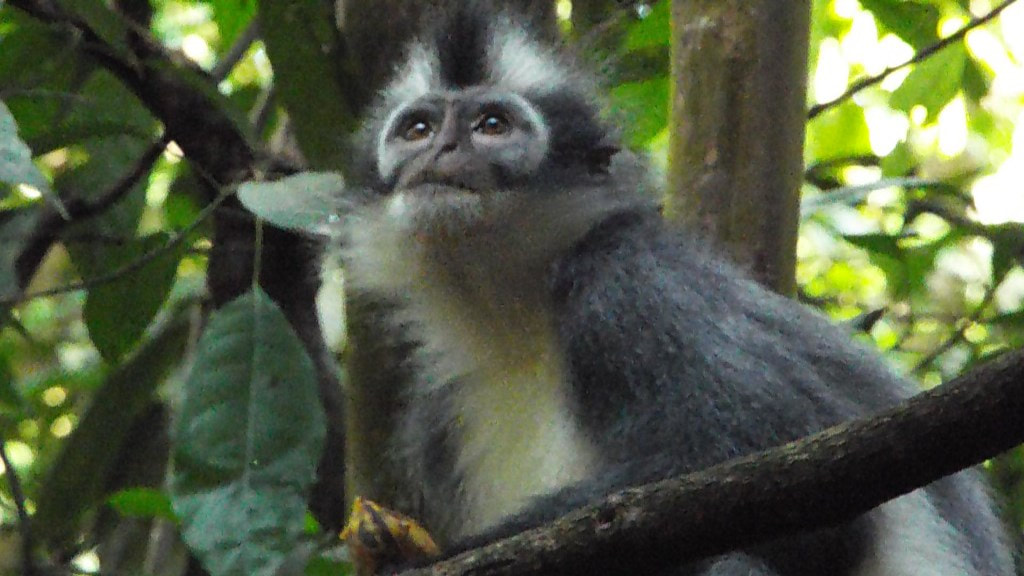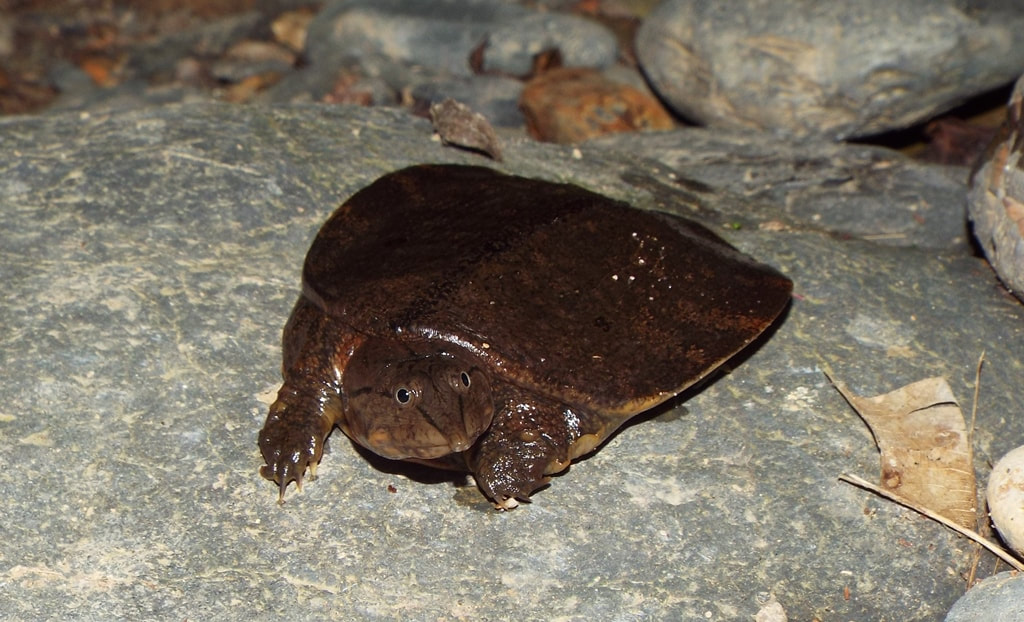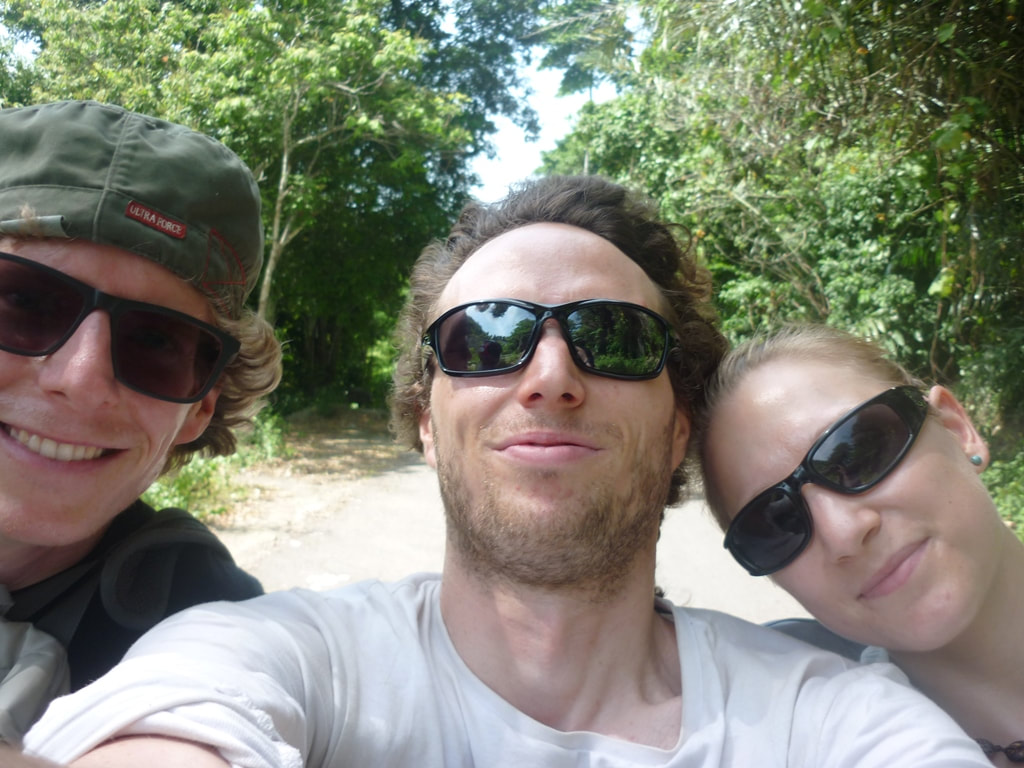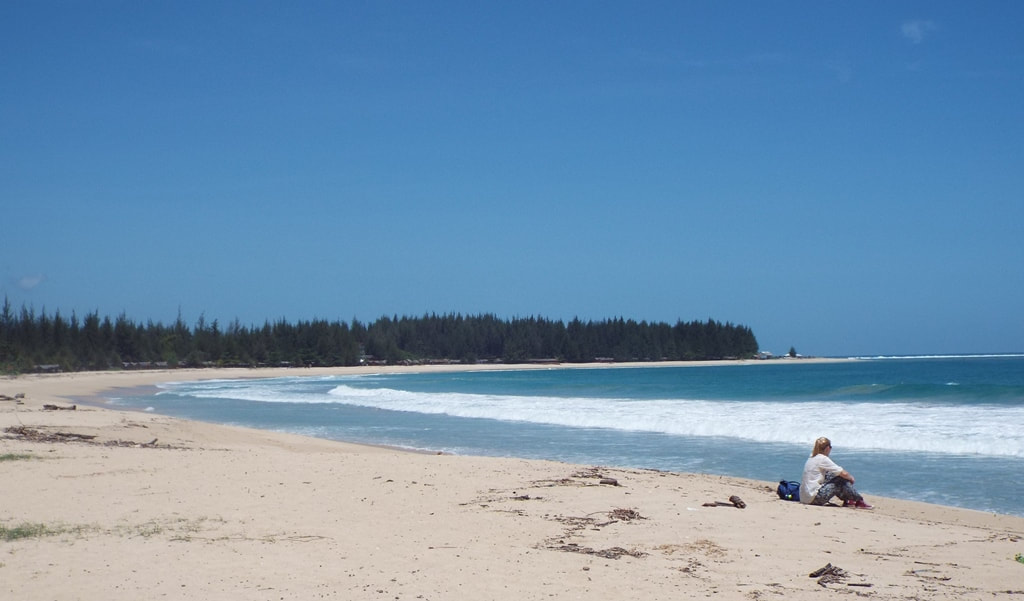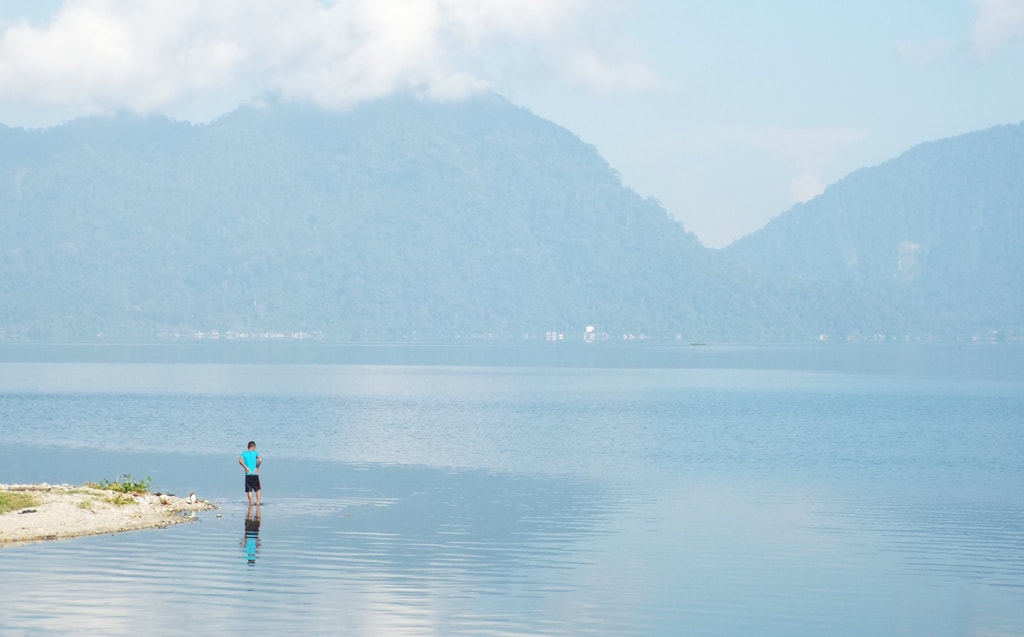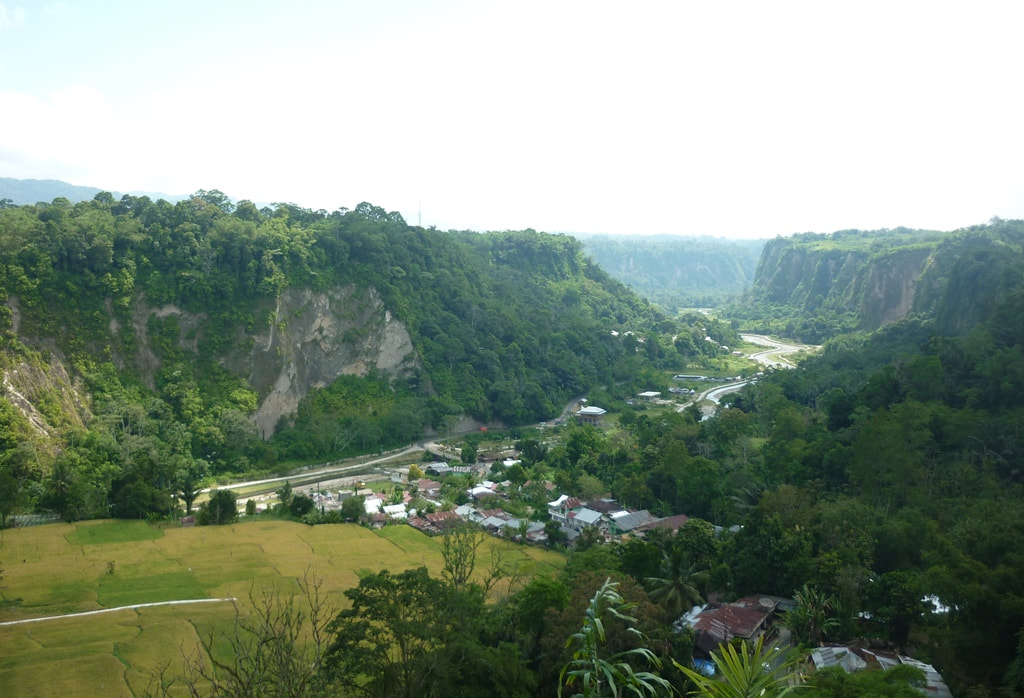Sumatra - June/July 2015
Last year’s Malaysia trip had been a really enjoyable introduction to South East Asia and I’d finally got off the mark with a few snake species towards the end of the trip. There were so many more species I wanted to see and I was almost tempted to return, or at least try Kalimantan, but we decided to try something different - and Sumatra was the answer. Our holiday/herping team would consist of me, my long-suffering other half Jill and my brother Paul.
Not wanting to waste time in the traffic and congestion of Jakarta, we immediately added to our air miles with a short hop to Palembang, Sumatra. Following some much needed sleep we were met with our first obstacle – nobody could assist us in getting to Sembilang National Park – so as our time was limited we flew to Medan and headed for the tourist destination of Bukit Lawang on the edge of Gunung Leuser National Park.
Not wanting to waste time in the traffic and congestion of Jakarta, we immediately added to our air miles with a short hop to Palembang, Sumatra. Following some much needed sleep we were met with our first obstacle – nobody could assist us in getting to Sembilang National Park – so as our time was limited we flew to Medan and headed for the tourist destination of Bukit Lawang on the edge of Gunung Leuser National Park.
Bukit Lawang/Gunung Leuser
Located by the river on the edge of Gunung Leuser, the main tourist lodges stretch from the road and along the river bank following a footpath which also doubles as a motorbike trail for the locals. A few rickety bridges span the river, linking the main village to a few more lodges and then on to the national park. That evening we had our first night walk, finding a few amphibians, a civet and giant gecko on returning to our bathroom.
To enter the park a guide is necessary, and after explaining to the guide association that we preferred snakes to semi-wild primates we were introduced to the village’s own Tarzan and decided a few days in the jungle could only be eventful with him around.
We spent three days and two nights in the forests of Gunung Leuser, the first day a little too heavy on the primates for my liking. In between the orang-utans, Thomas’s leaf monkeys and macaques there were some pretty cool squirrels and hornbills, plus our tally of frogs, lizards and invertebrates began to add up. On reaching our camp by the river, we got more views of hornbills and kingfishers whilst Paul successfully set about locating a soft-shelled turtle, further boosting the species list.
Located by the river on the edge of Gunung Leuser, the main tourist lodges stretch from the road and along the river bank following a footpath which also doubles as a motorbike trail for the locals. A few rickety bridges span the river, linking the main village to a few more lodges and then on to the national park. That evening we had our first night walk, finding a few amphibians, a civet and giant gecko on returning to our bathroom.
To enter the park a guide is necessary, and after explaining to the guide association that we preferred snakes to semi-wild primates we were introduced to the village’s own Tarzan and decided a few days in the jungle could only be eventful with him around.
We spent three days and two nights in the forests of Gunung Leuser, the first day a little too heavy on the primates for my liking. In between the orang-utans, Thomas’s leaf monkeys and macaques there were some pretty cool squirrels and hornbills, plus our tally of frogs, lizards and invertebrates began to add up. On reaching our camp by the river, we got more views of hornbills and kingfishers whilst Paul successfully set about locating a soft-shelled turtle, further boosting the species list.
Our first night in the forest provided a new form of snake-searching; in shorts and flip-flops we walked up the river scanning overhanging trees and vegetation. There were some impressive palm-sized water spiders rafting around, plus some interesting frogs began to show up. Tarzan herped at a serious pace, and he was somewhere up river when I spotted the first snake of the trip, a red-sided keelback (Xenochrophis trianguligerus) resting about a metre above the river. Having waited nearly two weeks on my last trip we were elated to have a snake so early on.
The following morning Tarzan caught a different turtle over a casual breakfast (turtle was not on the menu though) then it was off into the trees once more, but not before a tiny keelback had evaded us in a riverside pool. A few hours later we were back on another bank of the river with a few hours to explore until sunset…
Just as we were checking batteries Tarzan, who had set off into the darkness two minutes earlier, began to yell from the other side of the river. Slipping on stones and tripping over flip-flops (probably the most unsuitable footwear for the task at hand) we reached the far bank to be greeted by a very large, very thick and very feisty snake. In the light of our torches we could see the distinctive head and tail of the beast – a red-headed krait (Bungarus flaviceps). Tarzan had the tail and Paul (who sensibly opted for boots) assisted with head-pinning duties whilst Jill sensibly retreated elsewhere, and before we knew it we were face to face with a solid two metres of the most fear-inducing snake I’ve ever come across. Not wanting to cause any more stress, we didn’t worry about photographs, just a couple of evidence shots and a video as it cruised between the rocks and off into the darkness where our torches couldn’t reach.
That night also produced a leopard cat, a toad rarely seen in this area and the most mosquitos I’ve ever had in my eyes at once. During the three or so hours we were unable to add to the snake tally, but we still had another full day to come.
That night also produced a leopard cat, a toad rarely seen in this area and the most mosquitos I’ve ever had in my eyes at once. During the three or so hours we were unable to add to the snake tally, but we still had another full day to come.
As we neared the village once more, we stopped on a river island of pebbles. Tarzan was coming into his own now, he’d overtaken my snake spots and even he seemed more than pleased when he noticed some green coils on a branch high above. Looking pit-viperish we decided to leave it be, but after looking at some in-situ photographs we began to have doubts. Of course Tarzan knew it wasn’t a viper all along, but we took a little longer to realise we were looking up at a red-tailed racer (Gonyosoma oxycephalum) – one of my most wanted species. We then spent an entertaining few minutes trying to gently dislodge it from its perch.
Returning to the village we added to our total with a couple of young Wagler’s pit vipers (Tropidolaemus wagleri) in some low trees.
That evening we met up again with Tarzan to explore some of the ‘gardens’ of the village, spotting close to twenty Wagler’s pit vipers, around seven or eight painted bronzebacks (Dendrelaphis pictus), a speckle-headed vine snake (Ahaetulla fasciolata) and Paul’s target species for the trip, a stripe-tailed bronzeback (Dendrelaphis caudolineatus) which was as bitey and defensive as he’d hoped. And with that our first three days in the tourist-trap of Bukit Lawang had provided us with a fine collection of snakes to start the trip. I was never keen about needing guides to get around the park, but in Tarzan we’d found a great guy who was as dedicated as us when it came to night searching. Thanks for the memories Ipul.
Pulau Weh
Following the delights of three hours in the urban sprawl of Binjai and an 8-hour night bus to Banda Aceh, we arrived at the fast ferry feeling rather drained. 45 minutes later and we set foot on Pulau Weh for the next chapter of the trip. Initially setting off for Iboih Beach in two Tuk-Tuks, we pulled over and managed to all pile onto one, breaking every single Health & Safety rule as we went.
Following the delights of three hours in the urban sprawl of Binjai and an 8-hour night bus to Banda Aceh, we arrived at the fast ferry feeling rather drained. 45 minutes later and we set foot on Pulau Weh for the next chapter of the trip. Initially setting off for Iboih Beach in two Tuk-Tuks, we pulled over and managed to all pile onto one, breaking every single Health & Safety rule as we went.
There’s plenty of snorkelling to be had, with some of our highlights being blue-spotted stingray, moray eels and lionfish. We also took a tour of the island, stopping at a waterfall surrounded by skinks (where a stripe-tailed bronzeback made a quick getaway from Jill) and visiting an acrid volcano devoid of life – I preferred the former.
The evenings produced one of the highlights of the trip (and my life) as the nocturnal chorus soon confirmed we were in the presence of one of my favourite childhood creatures – the tokay gecko. We soon got our eye in (which was not difficult given their amazing size and colour) and I couldn’t resist making a catch, figuring that if I was careful they’d defend themselves as opposed to throwing a tail.
Banda Aceh and onwards
Leaving Pulau Weh we spent a day around a key surfing beach near Banda Aceh. Some nice views along the beach couldn’t detract from the fact it was hotter than the sun – and soon we were on our way to Padang via an evening stay in Medan, a crowded and congested slice of urban Sumatra and somewhere that I do not care to return. We escaped early the next morning to Padang and took a taxi up to Bukitingi, another slice of urban living but maybe not quite the extremes of Medan or Binjai.
Using Bukitingi as a base we had a few short trips out to Lake Maninjau and the Harau Valley, but not before some of Sumatra’s finest germs had insisted I buy some R-rated antibiotics from a local shack. Jill and Paul explored the local area and found a cool viewpoint over the valley where we returned later to watch giant fruit bats making their way on steady wingbeats across the pink and orange evening sky.
At Maninjau we took it easy (largely my fault) and I was able to observe a couple of munia species making nests in the surrounding reeds. Harau Valley provided an interesting trip out – we took a car with Hanafi from Hotel Orchid, which worked really well as he took us to a few interesting spots and gave us the freedom to wander around different parts of the valley. There were some pretty interesting butterflies here, some different lizard species and another escaping stripe-tailed bronzeback.
Leaving Pulau Weh we spent a day around a key surfing beach near Banda Aceh. Some nice views along the beach couldn’t detract from the fact it was hotter than the sun – and soon we were on our way to Padang via an evening stay in Medan, a crowded and congested slice of urban Sumatra and somewhere that I do not care to return. We escaped early the next morning to Padang and took a taxi up to Bukitingi, another slice of urban living but maybe not quite the extremes of Medan or Binjai.
Using Bukitingi as a base we had a few short trips out to Lake Maninjau and the Harau Valley, but not before some of Sumatra’s finest germs had insisted I buy some R-rated antibiotics from a local shack. Jill and Paul explored the local area and found a cool viewpoint over the valley where we returned later to watch giant fruit bats making their way on steady wingbeats across the pink and orange evening sky.
At Maninjau we took it easy (largely my fault) and I was able to observe a couple of munia species making nests in the surrounding reeds. Harau Valley provided an interesting trip out – we took a car with Hanafi from Hotel Orchid, which worked really well as he took us to a few interesting spots and gave us the freedom to wander around different parts of the valley. There were some pretty interesting butterflies here, some different lizard species and another escaping stripe-tailed bronzeback.
Kersik Tua and Sungai Penuh
Deemed as the gateway to Kerinci National Park, Kersik Tua took almost half a day in an uncomfortable mini-van, and turned out to be a bit disappointing. At quite an elevation and surrounded by tea plantations, the views are interesting but the nights were too cold for any of the species I wanted to see. Jill was happy to be somewhere different, her cheerful disposition contrasting perfectly with my despondent vibes. We spent a day paddling two crudely hammered together logs, or canoes as they were referred to on occasion, and slowly battled a steady headwind upriver – spotting birds including long-tailed shrike, purple heron, some sort of kite and yet more kingfishers. Unfortunately for Paul and I the last few days had been devoid of herping opportunities, and after a frustrating day arranging transport out of Sungai Penuh, we were left with only a few days to add to the species list.
Deemed as the gateway to Kerinci National Park, Kersik Tua took almost half a day in an uncomfortable mini-van, and turned out to be a bit disappointing. At quite an elevation and surrounded by tea plantations, the views are interesting but the nights were too cold for any of the species I wanted to see. Jill was happy to be somewhere different, her cheerful disposition contrasting perfectly with my despondent vibes. We spent a day paddling two crudely hammered together logs, or canoes as they were referred to on occasion, and slowly battled a steady headwind upriver – spotting birds including long-tailed shrike, purple heron, some sort of kite and yet more kingfishers. Unfortunately for Paul and I the last few days had been devoid of herping opportunities, and after a frustrating day arranging transport out of Sungai Penuh, we were left with only a few days to add to the species list.
Padang to Bungus to Rimba
Arriving in the humid lowlands of Padang was a relief after the near English conditions of Kerinci evenings. Travel had once again taken most of the day, but we were done with mini-vans and taxis and were now on a small motor boat leaving Bungus and heading for Rimba Ecolodge just south of Padang.
Paul and I were straight into the night searching. Within minutes we’d found a large skin-shed, a real teaser. Was it close by? Had it just been passing through? We continued for a couple of hours, Paul eventually spotting a vine snake as I waded through some mangroves a few metres away. Looking up at the bright white belly of the snake we could see it was a new species for the trip, and as I lowered the branch Paul soon had the oriental vine snake (Ahaetulla prasina) in his hands. A few minutes later we spotted a second, this one a good 30ft above us and safely out of our reach.
Arriving in the humid lowlands of Padang was a relief after the near English conditions of Kerinci evenings. Travel had once again taken most of the day, but we were done with mini-vans and taxis and were now on a small motor boat leaving Bungus and heading for Rimba Ecolodge just south of Padang.
Paul and I were straight into the night searching. Within minutes we’d found a large skin-shed, a real teaser. Was it close by? Had it just been passing through? We continued for a couple of hours, Paul eventually spotting a vine snake as I waded through some mangroves a few metres away. Looking up at the bright white belly of the snake we could see it was a new species for the trip, and as I lowered the branch Paul soon had the oriental vine snake (Ahaetulla prasina) in his hands. A few minutes later we spotted a second, this one a good 30ft above us and safely out of our reach.
That night Paul emphatically entered the Sumatran stomach club and duly joined in with the taking of super-strength antibiotics. We spent a couple of days relaxing at Rimba and continued to search at night, finding some whip scorpions, a fair-sized millipede and what looked like a banded linsang (Prionodon linsang).
Evenings looking west out over the Indian Ocean were delightful; the sky and sea would glow as the clouds turned from pink to gold before darkness took over for the night. Our final sunset was particularly beautiful and heralded our last chance of some nocturnal creatures. Wading through the mangroves by torch light we came across a rather large monitor lizard lying submerged and completely blocking our route. A few wiggles of its tail signalled it was not going to budge without a fight, so we left it in peace as king of the mangroves. We then moved to a different section of forest and saw a familiar thin coil of bright white snake ventrals, allowing us to sign-off our Sumatra trip with a third oriental vine snake.
Evenings looking west out over the Indian Ocean were delightful; the sky and sea would glow as the clouds turned from pink to gold before darkness took over for the night. Our final sunset was particularly beautiful and heralded our last chance of some nocturnal creatures. Wading through the mangroves by torch light we came across a rather large monitor lizard lying submerged and completely blocking our route. A few wiggles of its tail signalled it was not going to budge without a fight, so we left it in peace as king of the mangroves. We then moved to a different section of forest and saw a familiar thin coil of bright white snake ventrals, allowing us to sign-off our Sumatra trip with a third oriental vine snake.
I personally wouldn’t return to Sumatra: it's pretty filthy, the transport is more than frustrating and any urban areas are less than appealing. Whether the forest will still be here in a few years is of course another matter.
Looking back now I’m a lot more upbeat about how the trip went. This kind of thing can be very hit and miss- and despite having lots of misses the hits were decent - so all in all a few good critters and some interesting landscapes meant the trip was worthwhile.
Looking back now I’m a lot more upbeat about how the trip went. This kind of thing can be very hit and miss- and despite having lots of misses the hits were decent - so all in all a few good critters and some interesting landscapes meant the trip was worthwhile.
In terms of unfinished business, one of my most wanted species, the mangrove cat snake, has continued to evade me. Perhaps another Asian trip will be on the cards…




